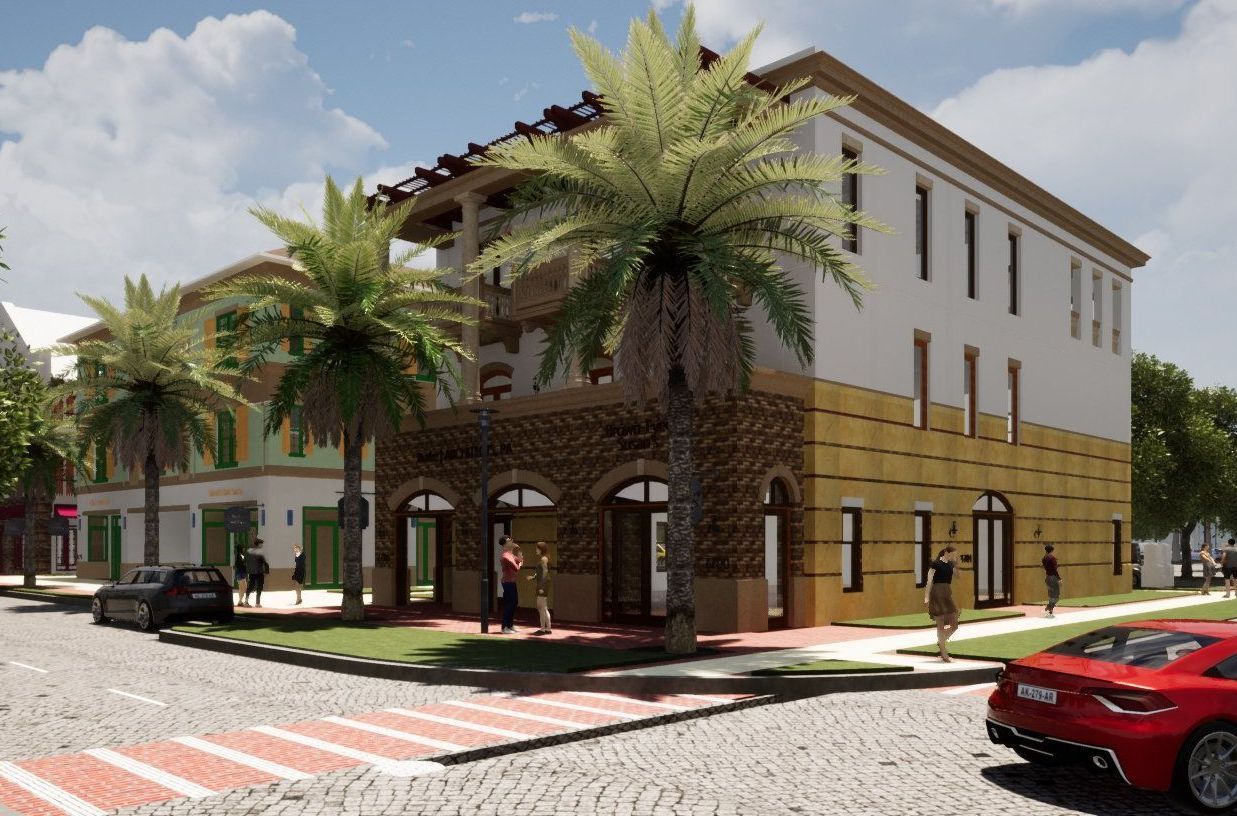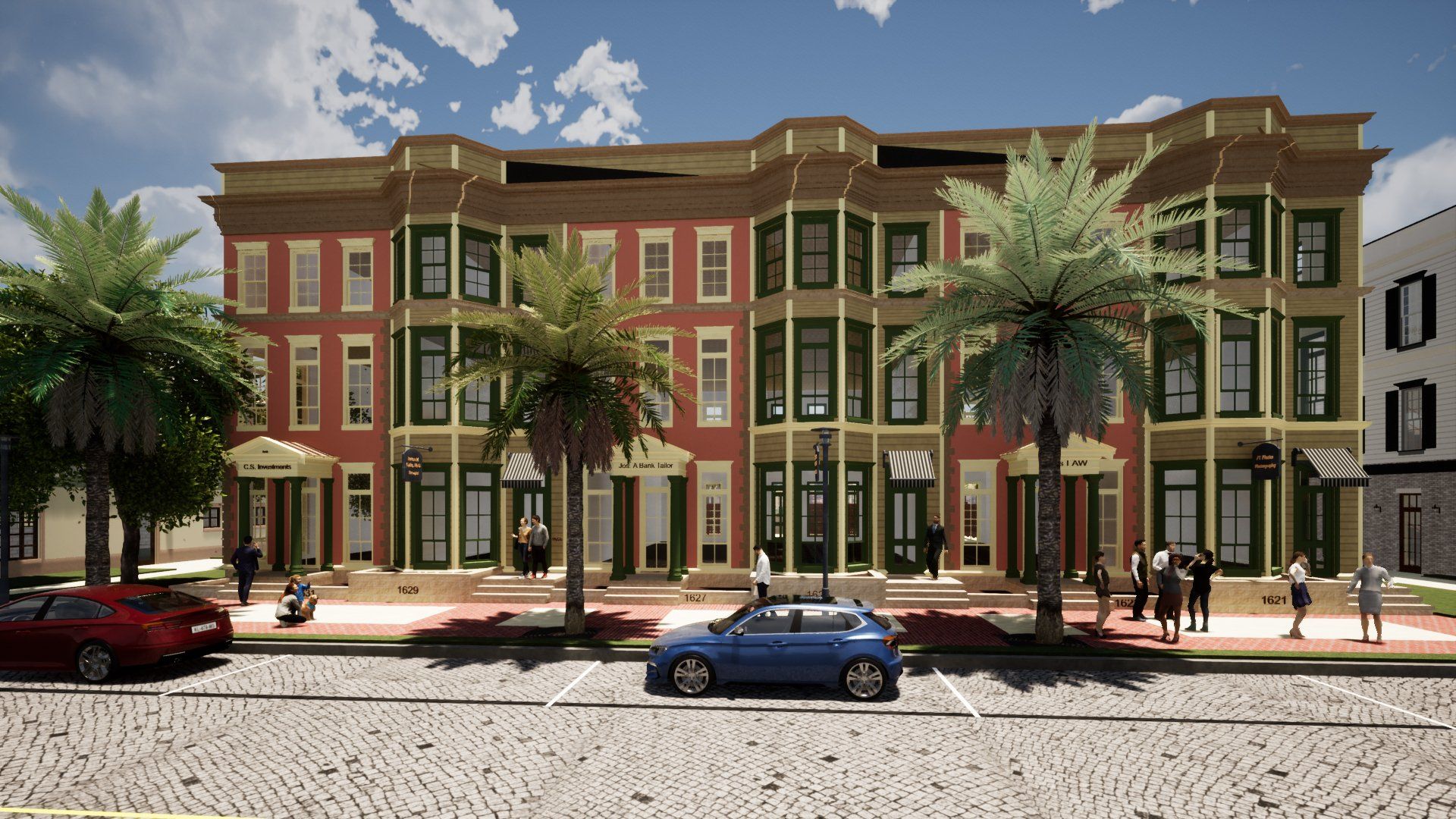BIM: Why it’s the key to architectural success
If you’re an architect or architectural student, you’ve likely heard of BIM but maybe don’t have experience using it. If you’re interested in using it for your next project or simply learning more about it, this is the article for you.
The thing is, lecturers don’t teach students how to use BIM in architecture courses, which is a shame because it plays a pivotal role in ensuring the success of architecture projects.
This innovative modeling process amalgamates several design systems into one 3D model with virtual tools that drill into the tiny details of each element.
Using a BIM (Building Information Modeling) process for your architectural project is key to minimizing issues down the road, designing well-thought-out and technically sound buildings, streamlining the entire design and construction process, and ensuring accountability.
At Gregory John Burke | ARCHITECT we’ve been using the BIM process for over 20 years, and we couldn’t imagine working on a project without it. It’s to this modeling process that we owe our success.
Today, we will discuss how we got started with BIM, why it’s so beneficial, and some things architects should consider when investing in this architectural modeling system.
By leveraging your architecture firm's use of BIM, you’re giving your clients peace of mind knowing you’ve meticulously planned their design.
My history with BIM — What I've learned along the way
I was first introduced to BIM in the late 1990s when the original developer of Revit, Charles River Software (CRS), asked 20 architects for their input on its software. One of those architects was me.
What excited me about this software was how it could help architects, contractors, and facility managers come together to create a well-thought-out model.
I was attracted to the CRS vision and how this piece of software could fill common gaps when it came to accountability, reducing risk, and designing with forethought.
For three years, I was actively involved in the development of Revit. From then, I became heavily entrenched in using Archicad while it was in its 8th version.
It’s been more than 20 years since we began using it here at Gregory John Burke | ARCHITECT, and it’s now in its 25th version. Archicad is credited as the original BIM software dating back to 1985, so it felt like the right choice.
Another attraction is that architects developed it for architects. In comparison, AutoDesk began developing AutoCad by programmers for engineers first, and architects then took up the use of AutoCad. When AutoDesk bought the rights to Revit, the primary design focus stayed the same. In fact AutoDesk has developed Revit for every aspect of the construction industry, with architecture being one of the many platforms that Revit serves.
What happens with poor planning? A case in point
A prime example of what can occur when there isn’t any upfront investment in proper planning systems is a Princeton University case.
The University sought to have a large building constructed dedicated to the study of the environment and energy. The building was a result of a 100 million dollar gift from a university benefactor. The project suffered from being ten months behind schedule, and was excessively over-budget.
The university sued the design and construction team for 10.7 million dollars. Of the total suit, 1.5 million dollars was attributed to errors and omissions from the preparation of the design documents prepared using BIM. The poor execution led to more than 450 change order requests and 87 supplemental instructions from the architects to the construction team. Both are far in excess of what would be considered “normal” in a construction project.
A project of this complexity requires a BIM Execution Plan (BIM ExP) that directs the proper development of the building models so that the cost of the project stays close to the budget. The BIM ExP provides for a road map through the execution of the design and a constant measurement of accomplished tasks.
I myself was an expert witness for a different case where a subcontractor sued the contractor because they didn’t take responsibility for the poor planning of the project. It took 6 months longer than it was supposed to due to a lack of accountability, responsibility, and comprehensive planning. Again, if BIM was used properly, would this have happened? Who knows, but our guess is not likely.
How BIM Benefits Architecture Firms
1. Reduces change orders
One of the biggest benefits of executing a project via BIM is a reduction in the number of change order requests.
With BIM, models are designed with a much higher degree of accuracy and a granular level of information.
The effectiveness of the process ensures there is significantly less conflict down the line during construction. (And far less likely chance of a lawsuit!)
2. Improves technical accuracy
With the BIM model, our firm doesn’t immediately begin with building the model. Instead, the end-user, whether that’s facilities management or the contractor, has input from day one.
We start by understanding their requirements for the model and work backward to the concept.
Having a firm set of goals and a properly developed BIM Execution Plan helps with the project’s constructability and ensures everything seen on the design functions technically during construction.
3. Saves time
It’s typically difficult for architects to find time for anything outside of core design. Thinking more like a business owner and less like an architect, however, you’ll understand that BIM saves time in the long run.
Though there’s more upfront work, the rest of the project is streamlined. All the information each party needs is available at the click of a button, right down to product specs and costs.
They understand how each design component interconnects and what’s expected of them, meaning no wasted time going back and forth for information.
Once you’ve used the BIM process once, though you’ll still need to put in a lot of work for the next project, you can develop a framework that can be replicated and altered.
4. Increases accountability
There’s always an appointed leader for the BIM model. This person ensures that everybody understands their part of the design, what they need to achieve by specific dates and the process involved in meeting the client’s requirements.
When everyone knows their role, agrees with the design, and is aware of their tasks from start to finish, signing contracts to this effect - there’s no blame game if something goes wrong.
5. Reduces costs
In many cases, architecture firms struggle to justify the cost of BIM software. They forget that the reduction in change orders mitigates this cost.
The thing is, you have to spend money to make money. If you invest in your design team to use BIM and create a detailed view of the entire project with all the data in place, you won’t deal with lawsuits or going over budget due to conflicts during construction.
6. Gives you a competitive edge
More clients are aware of and requesting BIM than you might think. Whether people on their team have recommended it, or they’ve used it before - the demand is there, especially for large projects.
By leveraging your company’s use of BIM, you’re differentiating yourself from the competition, giving your clients peace of mind knowing you’ve meticulously planned their design. And, when your charge for the added value of BIM service, you improve your profitability.
With architects, reputation is everything. Word quickly gets out if a project went poorly or if it exceeded your client’s expectations. This is where BIM can help. It increases your credibility and offers more value for your clients.
Four Factors to Consider BEFORE you Start using BIM at your Architecture firm
Legal Implications
It’s imperative you have a team that understands how to put the whole process together to create accurate contracts. It should be clear within the contracts who is responsible for what and who will run the entire BIM process.
The American Institute of Architects (AIA) has done a reasonably good job with its standard contract templates - but they’re not all-inclusive. Watertight contracts keep everyone on the same page and protect you against costly lawsuits.
BIM use will continue to grow and be in demand by clients. To that end, if your firm is not using BIM to its highest and best use, you may be not performing to the standard of care that other architects in your area achieve. That could have a negative impact to the bottom line and profitability of your firm.
Team Capabilities
Before investing in BIM, it’s crucial to ensure you have the right staff on board or hire external BIM consultants, like ourselves, to consult on your project.
The most essential talent you need is:
- An experienced architect on the team that also understands the construction process
- An experienced leader of the BIM process who is responsible for the coordination of each element
- A design team responsible for inputting the data, such as product specs and costs.
Upfront Costs
It’s important to be realistic about the number of hours your team will put in during the BIM process. Not only do you need to devise a strategy for selling this service to your prospects, but you’ll also need to ensure you package and price it correctly. If you charge for this service, you can make more profit and ensure the total satisfaction of your client.
Facilitating Communication
Communication is everything when it comes to BIM. Not only within your team but with your BIM consultants, construction manager, owner, facility manager, and others on your design team.
Every team member should have a deep understanding of each element, how it interconnects with other design elements, and what they’re responsible for. It’s only with effective communication and collaborative protocols that BIM works as it should.
Create a communication plan to ensure there’s enough of it, and it’s being handled methodically. For example, you could devise agendas for meetings, keep a paper trail of communication, check-in with every team member to ensure they’re not confused about anything, etc.
When to hire a BIM consultant
If you’re new to BIM but want to implement it as the new way forward for your firm, or if you have already implemented it and need help improving it, Burke Architects can help.
We offer BIM consulting services to help other architect firms implement this process for one-off projects or to help them revolutionize their entire design process.
Our focus is on ensuring return on investment from the software, helping craft contracts, and educating teams on using BIM practically.
If you’d like to learn more about BIM or are considering using it for your firm and need an experienced consultant on your team, please don’t hesitate to contact us.
Greg Burke, FAIA











